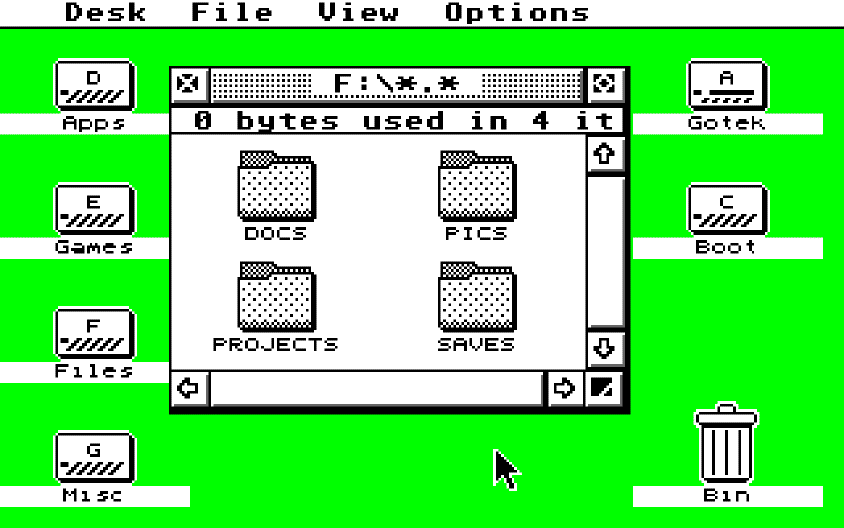- Garcia's Guide to the Galaxy
- Posts
- TOS Is Rubbish

I never noticed it growing up but I see it now, TOS is profoundly flakey. My ST has a TOS 1.62 ROM built in and it does not play nice with hard drives.
There’s a simple solution to this, use the wonderful open source EmuTOS instead. Now I’m not resourceful enough to go writing EmuTOS to a flash ROM but my ST does have enough RAM that I can easily get away with loading it up from the hard drive.
Not everything is compatible with EmuTOS, most notably games. I prefer to run games from floppy so skipping hard drive boot by holding down the Alternate key when turning on helps here.
This is the normal way to install EmuTOS but I had trouble getting it to play nice with my ACSI2STM drive. See Advanced Installation: bootloader below if you are also using ACSI2STM.
Instructions to install are here. Grab the latest version of EmuTOS here, look for the file beginning with emutos-prg-... (not emutos-prg256-...) to boot from the hard drive, or emutos-floppy-... to boot from, you guessed it, floppy. The latter is a bootable floppy image that you can either run directly from a Gotek or write to a floppy disk if you still have the means to do so.
In the emutos-prg-...zip file there are a bunch of language versions to choose from, I use emutosuk.prg for PAL English, but you can also use the multilingual emutos.prg if you’re not sure. See the bundled readme.txt for more information. Copy the appropriate .prg file into the AUTO folder of your boot partition. Next time your ST boots from your hard drive you should find yourself inside EmuTOS.
This is the approach I use as it’s compatible with the ACSI2STM drive I use. Essentially it takes over the boot process and drivers that would normally be set up by ACSI2STM. The only drawback as far as I can see is that it doesn’t play nice with the realtime clock on the ACSI2STM, but it does allow for more flexibility with partitions for example.
This is a bit more advanced but the instructions are quite clear. Check out the GitHub project page for downloads and instructions.
EmuTOS follows many of the same design paradigms that the GEM desktop does so it shouldn’t feel too alien. The first thing to do is make sure all your partitions are recognised:
Options and select Install devices to ensure your partitions are visible on the desktop.Options > Remove desktop iconOptions > Install icon...Options > Save desktop...EMUDESK.INF, not DESKTOP.INF.Once you have some applications living on your hard drive, you can even set up file associations so that double-clicking on a file with that installation will open it in the appropriate application. To do this:
.PRG file.Options > Install application.....TXT files with Protext, select PROTEXT.PRG and set the following configuration options:TXTApplicationFull path © Copyright 2025
Phil Watson
Last updated
Thursday, 29/May/2025 09:38 +1000
